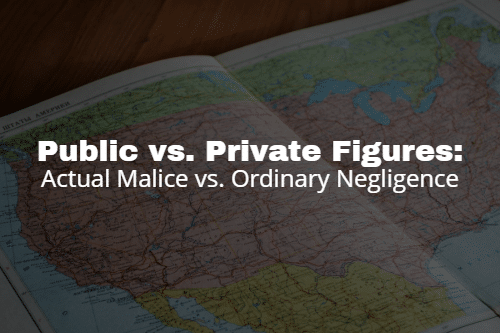

Instead, it maintains that those constitutional amendments "did not abrogate the common law" that was in place at the time. With the "original meaning" of the First and Fourteenth Amendments as his lodestar, Justice Thomas's concurrence surveys libel law at the time those amendments were ratified and finds no support for the "actual malice" test.

In McKee, Justice Thomas urged his colleagues to abandon Sullivan and its progeny as "policy-driven decisions masquerading as constitutional law." 586 U.S. 46, 52 (1988) (internal quotation marks and citation omitted). and a rule that would impose strict liability on a publisher for false factual assertions would have an undoubted 'chilling' effect on speech relating to public figures that does have constitutional value." Hustler Magazine v.
ACTUAL MALICE FREE
As the Court later recognized in justifying this test, "even though falsehoods have little value in and of themselves, they are nevertheless inevitable in free debate. 130 (1967)), including limited-purpose public figures ( Gertz v. The "actual malice" test was later extended by the Court to non-official public figures ( Curtis Publishing Co. a federal rule that prohibits a public official from recovering damages for a defamatory falsehood relating to his official conduct unless he proves that the statement was made with 'actual malice' – that is, with knowledge that it was false or with reckless disregard of whether it was false or not." Id. Specifically, the Court held that the constitutional guarantees of the First Amendment "require. The Court then held that the First Amendment (as applied through the Fourteenth Amendment) limits the power of States in awarding damages in defamation actions "brought by public officials against critics of their official conduct." Id. In an opinion by Justice William Brennan, the Court recognized the "general proposition that freedom of expression upon public questions is secured by the First Amendment," and viewed the "case against the background of a profound national commitment to the principle that debate on public issues should be uninhibited, robust, and wide-open, and that it may well include vehement, caustic, and sometimes unpleasantly sharp attacks on government and public officials." Id. Although the official prevailed in Alabama state court, the U.S. A city official in Montgomery, Alabama who claimed to be implicated in those false allegations sued the newspaper for libel. The advertisement described several disturbing events, some of which contained what were indisputably false statements. In March 1960, the New York Times published a full-page advertisement describing an "unprecedented wave of terror by those who would deny and negate" the constitutional rights of those in the civil rights movement. So what did the Court hold in Sullivan, and what role does Justice Thomas see the First Amendment playing in defamation cases, if any? He agreed that the Court should not wade into the "factbound question" at issue ( i.e., whether the plaintiff was a limited-purpose public figure), but went on to argue that Sullivan, in a more "appropriate case," should be rejected as unsupported by the original meaning of the First Amendment.

323, 351 (1974).Īlthough the Court did not issue an opinion in McKee, Justice Thomas wrote a rare concurrence in denying certiorari. Lower courts ruled that the case should be dismissed under Sullivan, which generally makes it difficult for public figures to prevail on such claims, including those who gain notoriety only "for a limited range of issues." Gertz v. Supreme Court unanimously declined to review a defamation case against comedian Bill Cosby filed by a woman who claimed that he raped her and who went to the press with her accusation. 254 (1964), a cornerstone of First Amendment jurisprudence for more than five decades. Justice Clarence Thomas stunned court watchers last week when he went out of his way to urge his fellow jurists to reconsider New York Times v.


 0 kommentar(er)
0 kommentar(er)
